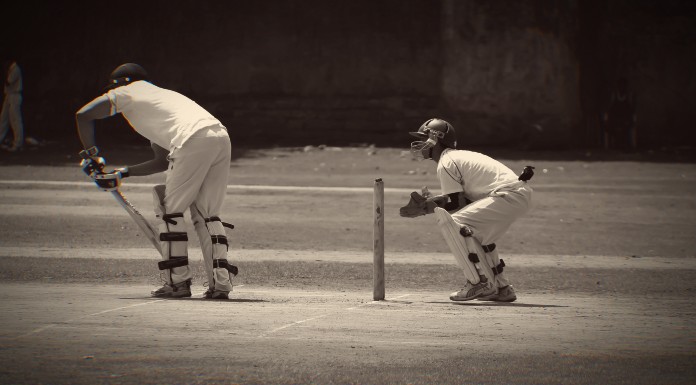As clubs of all descriptions and code begin to start up again this summer, we continue our lookback at the sports of the past. This week we focus primarily on the development of cricket as well as other sports in Tipperary. Alongside the development and popularity of hurling and hunting across the Premier County in the 19th century, many other types of games were also being played. No doubt, racing was one of the most influential and, apart from hurling, has left the longest legacy on the county. However, other sporting pastimes began to be taken seriously and were focused on by many living in the county.
The items used in playing a number of sports couldn’t be sourced in local shops. Dr. Pat Bracken, author of ‘The Growth and Development of Sport in county Tipperary 1840-1880’ explains why: “A lot of sports were very much based around the country estate, behind the walls. A lot of the people outside – tenant farmers, labourers, cottiers – couldn’t really see what went on in the estate, and a lot of what went on was something people had to be invited into. They had the lawns and the time to play. A popular game in the estates was archery. A lot of these games evolved over from England. The mail-order catalogues, such as ‘The Penny Post’ meant these items could be purchased from England. The money would be sent over and then mailed back to Ireland so you could have an archery set, a cricket set or a tennis set which would be posted from England. It was one means of getting sporting goods.
“Now you could see, in the local papers like the Clonmel Chronicle and the Nenagh Guardian, where local shops would sell fishing rods or guns or tennis gear or cricket gear. In the 1910s adverts would pop up for O’Neills which, as we know today, are one of the top leading GAA sports kit suppliers. If you look at it a lot of it tied in with ownership of land. The cottiers and tenant farmers were on someone else’s estate. What land they had they needed to feed a big family and people were mindful that the famine had a big impact.”

As a result of this, sport was more so the preserve of those with the wealth and time to participate. Despite a famine that affected millions, sport was still enjoyed by people across the nineteenth century.
John Bagnell, one of the leading landowners and an MP, paid £25 to the local appeal fund. People with the landed estates were the best subscribers, giving money to support funds. Once that moral obligation was fulfilled, life continued as normal for them. The support funds were to support the starving. Pat takes up the story: “Say if you had a collection for the poor of Clonmel, a list would be given of those who supported the collection. At the top of the list might be John Bagnell, who gave £25 and then it’s down along to those who gave five shillings. This list would be in the local papers. The elite would have supported it. It was a distress fund for the poor in the area. They also had to pay poor law rates which were paid on property but they had a lot of tenants so there was money coming in from everywhere.”
During the famine, playing cricket among the military officers was common. This is where it’s not as clear cut but you had teams in estates playing teams in other estates. Pat continues, “Take Durrow Castle in county Laois. The Ashbrook Union cricket club was based on the Durrow Estate. The scorebook survives and I got to take a look at it. Players had to pay a certain amount and got to play a certain number of matches. They had five men who they selected to play on the team. They were employed on the estate. They were paid to play at the height of the famine. Depending on how strong it was around Durrow, you had five men paid to play cricket every weekend in 1846, 1847 and 1848. They had the wherewithal to play cricket. To me it suggests, perhaps, the famine might not have been as hard felt around that particular area as it was in the west of Ireland or other areas because here, they could play. I went through it week by week and there was a cricket match played virtually every week. Luncheons would be provided. So obviously they had time. A lot of the matches were played amongst themselves or the garrison at Templemore or teams from around Kilkenny and Laois as well.
“A lot of people looking at cricket today find it confusing and with a lot of rules but when cricket started to take off, reports in the papers were widespread. Borrisoleigh versus Fantane for example. That all goes on in the 1850s and 1860s and to me this is a takeoff period for sport in Tipperary. In or around the 1860s sport took off. If I was tied down to a particular year, I’d say about 1864. There’s more cricket, and there’s more horseracing.”
As sport grew in the consciousness of the people in post-famine Ireland, racing and cricket were the most reported on. Hurling still wasn’t organised and, as we touched on in previous weeks, the low literacy levels among the playing population meant there are few accounts of games from that era in comparison to other sports. Pat Bracken says there aren’t as many references hurling in the petty sessions “because some of the restrictions in terms of playing on Sunday’s, or breach of the sabbath, weren’t being enforced as much. There seems to be a lot more casualness about it from then on. I was able to date back the cricket matches to when the games were actually being played and a lot of the games were on a Sunday of teams made up of Catholics because teams of Church of Ireland members wouldn’t have gone out to play on a Sunday.”
Cricket was played right across the board; in the garrison towns of Clonmel, Nenagh and Cahir and right across all strands of society and all strands of names. “The Borrisoleigh Bootmakers were there,” Pat continues, “as well as a lot of Gentleman’s elevens. It was played wherever there was good quality land available to play on; for instance Rockwell College, the Abbey in Tipp town and Tipperary Grammar School. St. Patrick’s College in Thurles also had a cricket team in the 1870s. Even Michael Cusack, who was associated with the cricket at Blackrock College, he was very involved in it and was until he switched to supporting hurling in the 1880s. Even into the 1900s, a lot of teams would have gone from one team and one sport to another. Before the ban came in there was a casualness there.”
According to Pat, in the 1890s with the Parnell affair, the GAA went into a decline and cricket took off again in Tipperary in the 1890s. Thurles were lucky to field a team that day as Tipperary were playing hurling and a lot of the players were gone to it. When the ban came in there was a drop off in cricket team.
“The 1870s was the strongest period for cricket in Tipperary. At the time the ban was brought in for amateur athletes as Pat outlines, “Soccer, rugby, football were out but curiously enough golf wasn’t included. A lot was tied into this ethos of the amateur athletic association, as Tipperary was particularly strong in weight throwing events. There was one particular man, Richard St. John, in the 1870s, he was from the Mullinahone area. He won a huge number of events, some of them the entrance fee was one shilling and the winner got ten shillings. Another time he won a pound and over time he won a substantial sum of money by being a good athlete. Having to pay an entrance fee meant that a lot of people couldn’t enter because they didn’t have the money and so a lot were excluded from competing.”
There was an element of elitism in sport. In the 1870s you had the phenomenal career of the Davin brothers. Maurice, Pat and Tom excelled not just in Ireland but in England winning championships with Maurice being one of the leading athletes of his time. Continuing, Pat says, “later on we had Tom Kiely from Ballyneale so, that whole athletic career and movement of the time, others can look at and take what they want from it but the way I looked at it was that a lot of it seemed to develop and grow out from Carrick-on-Suir. The impetus and success of the Davins and how strong the Davins were seemed to emanate from Carrick-on-Suir and spread throughout Tipperary. That’s looking at it from how athletics meets developed.”
In terms of the present-day cricket scene, although still there, it’s nowhere near the dizzying heights of the latter-half of the 19th century. It’s estimated that in Tipperary alone there were anywhere up to 130 cricket clubs in existence between 1870 and 1884.
However, the almost meteoric rise of Gaelic games after the formation of the GAA, meant that in many ways, other sports – and in particular those which had their origins across the Irish Sea – were often overshadowed.
From archery to cricket, and athletics to racing, and onwards to the GAA, Tipperary’s sporting tastes were changing and in 1884 a new era dawned as Gaelic Games rapidly evolved.




